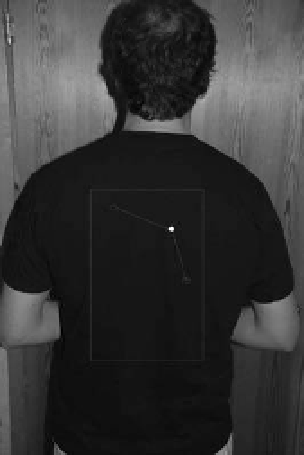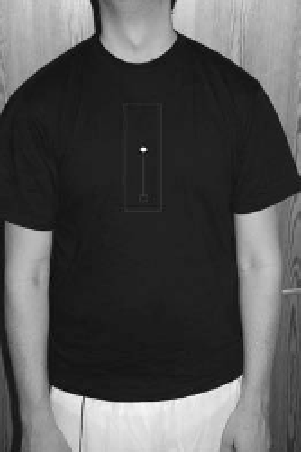Biomedical Engineering Reference
In-Depth Information
Figure 3.8.
The possible interaction strategy between a supportive system and an indi-
vidual person in a human-system interaction. Photo courtesy and copyright Peter Wide c
2010.
to complement, their normally-reduced sensing abilities often caused by age, with
the ability to stay active a longer period in life. By that means there is a fair chance
that an active perception driven life style will influence a positive dislocation in
time of age related disorders. If artificial sensors in the future will be able to pro-
vide people by giving them the current sensing impressions and the right stimulus,
then the sensor systems are indeed demanding a correct complement to the lack of
natural-based sensations.
It is believed that by affecting our perception with an enriched amount of stim-
uli, we will be able to increase our perceived input. Even if there exists some
doubt of the obtained effect, in combination with limited sufficient medical evi-
dence and confirmation of the physical increased value, there is surely evidence
of the effect in the traditional methods of treatment that is pursued in different
parts of the world, Jouper (2008). The evidenced-based effects are often reported
in convincing results, even if there are uncertainties sometimes in the results pre-
sented, Jenkins (2001). The fact is however, that when enriching the stimuli of our
sensing capabilities a natural consequence would be an achieved medical effect,
e.g., the tactile sensing by massage. The stimuli of an enriched sensing ability is
able to provide a positive effect on the body resulting in a healthy healing effect.
The opposite is, the negative effect achieving a destructive effect, as described in
the earlier section, when people were lacking sensory stimuli. The importance of
sensory perception has obviously a varying approach in different cultures, as well
as among different groups in a population. Since many generations, a continu-
ous fine-tuning of the experience and knowledge behind the perceptual treatment











Search WWH ::

Custom Search